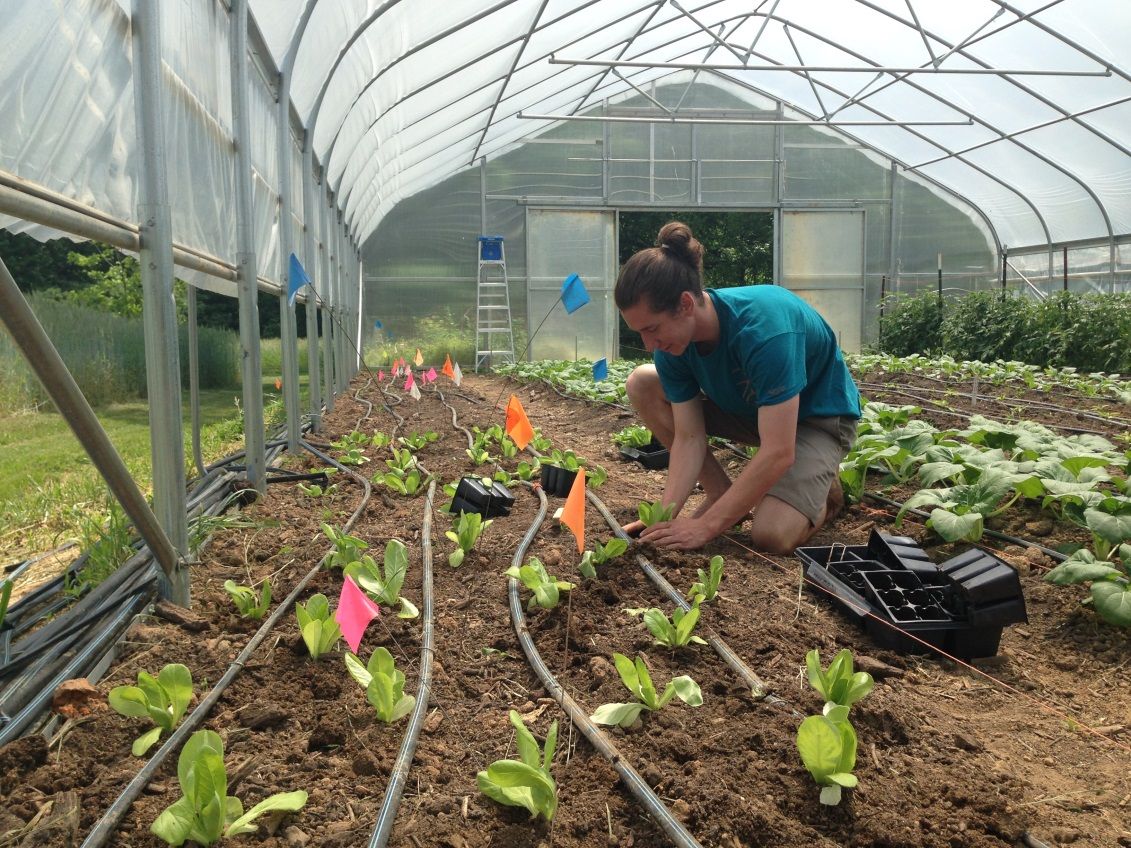Food in the City:
Mapping Potential Agricultural Production in Burlington, NC
Eric is a 2015 graduate of Elon University and was a student of Steve Moore's. He has a degree in Environmental Studies and is working on a farm located in Northern Orange County in North Carolina. He was first introduced to GROW BIOINTENSIVE (GB) in the summer of 2013 when he was an intern at his university's farm and worked under Steve. He continued to expand his knowledge of GB and combined it with his GIS knowledge for his undergraduate research. Steve shared this report on some of Eric's work in North Carolina with us. Until recently, agriculture in America has largely been based in rural areas of the country. Providing food to metropolitan areas is challenging, because in addition to the cost of production, the expense of distribution and transportation needs to be factored in. What if food production could be established within the urban setting? Using Geographic Information System (GIS) technology and the GROW BIOINTENSIVE® method, I set out to determine what amount of land was potentially available for growing a sustainable diet in Burlington, North Carolina.The GIS portion of the analysis combined land cover data–how much of the region is covered by forests, wetlands, agriculture, and other land and water types–and tax parcel data–land that contains real estate. I wanted to determine the optimal sites within Burlington that contained green space not heavily shaded by trees and parcels that were easily accessible by the general public. For the GB portion, I used Ecology Action's diet design forms to create two generic diets (one for a man and one for a woman) to use with the agricultural production analysis. I also referred to How to Grow More Vegetables to identify the desired crops and the nutritional qualities of those crops as the basis for the two unique diets. I figured the potential agricultural production by determining the total number of 162-square-foot beds (27 feet by 6 feet) that could fit in each parcel that contained non-canopy green space. The actual measurements for the bed are 25 feet by 4 feet, but I added an additional foot to each side to allow for two-foot pathways. Based on a realistic, maximum number of parcels in areas without canopy cover, I determined there was enough space for 908,609 beds with the potential to feed 25,543 individuals in Burlington for one year; that breaks down to approximately 12,005 men and 13,538 women. The distribution between men and women supported is based on a population composed of 47% men and 53% women. Burlington has a population of 51,510, so if the GB method was used, approximately 50% of the city's total population could be supported on a sustainable, vegan diet for a full year. Although this calculation uses rough data, this is the first time such a study for Burlington has been undertaken. Future studies can potentially elaborate and expand upon this information.
top | Newsletter Home | Article Index | Archive
|



